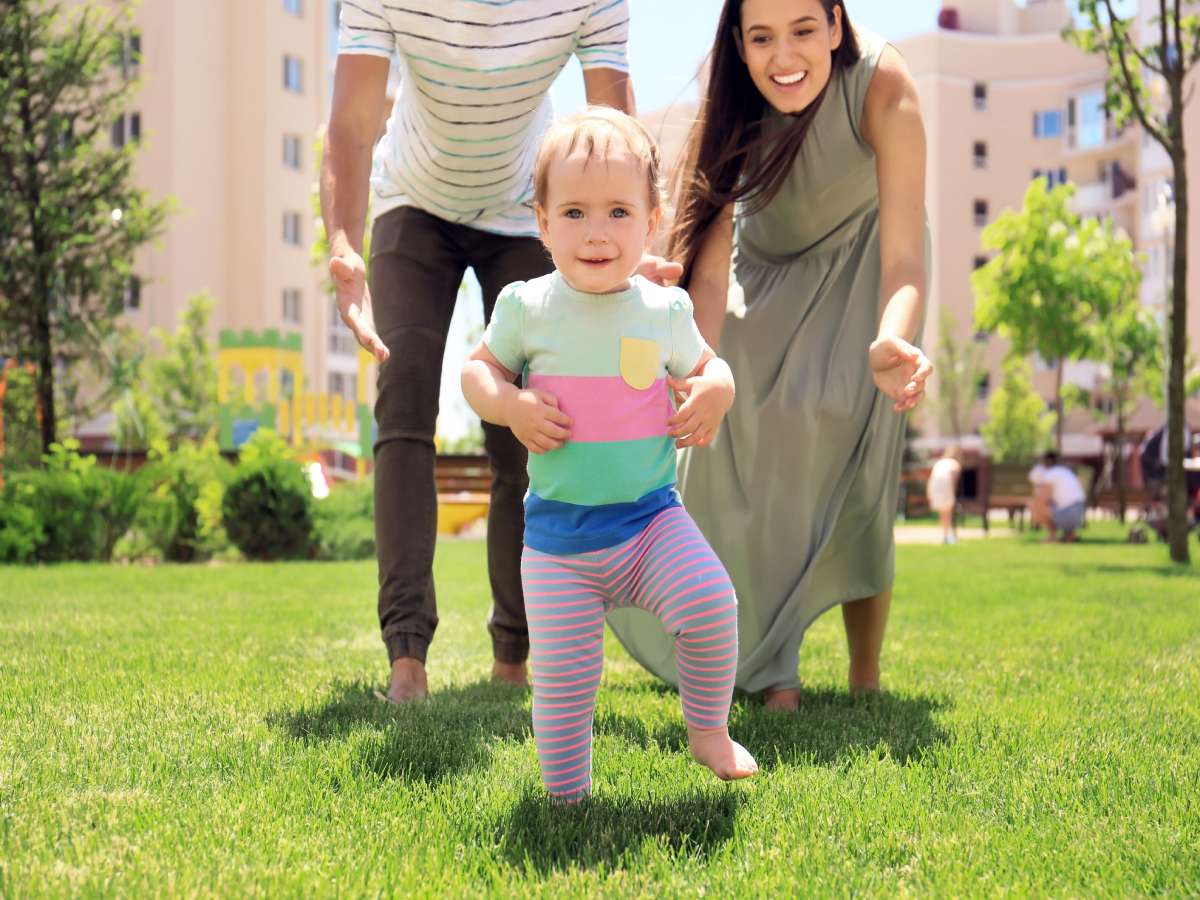Average Toddler Care Cost
In another article, I addressed the cost of having a baby and raising your child from birth to age 2.
I focused on absolute necessities that parents would have to buy including food, clothing, diapers, and hospital costs. Not included were things like a crib, the cost of a bigger home with an extra bedroom, and toys — because a savvy parent can probably do without those items or figure out how to get them for free.

But what is the cost per year of raising a toddler?
As your child reaches age 2, your family will find it absolutely necessary to carve out personal space and buy more items for the newest member of the family.
He or she will need a bedroom, a bed, a full wardrobe, and other necessities.
To help you budget, I’ve grouped together the types of expenses you are most likely to encounter when raising a toddler from age 2 to 4 in these categories:
- Housing Space
- Child Care
- Toys & Educational Items
- Clothing
- Food
- Medical Care
Okay, let’s explore how much a toddler really costs per month… and per year!
The Cost Per Year Of Raising A Toddler
These are the types of annual expenses that are generally required when raising a toddler (age 2 to 4)…
Housing / A Toddler’s Personal Space
If you haven’t made more space for your little one in your home yet, you should.
As they turn 2, they will certainly need their own room, bed, and play area.
This may or may not mean that you will have to buy a bigger home or apartment.
The difference between a 1-bedroom and 2-bedroom apartment (or rental house) is between $100 and $300 per month, depending on where you live.
Aside from adequate housing, you simply need a safe space for your toddler to sleep and play, and you shouldn’t need much money to make that happen.
This is NOT an annual expense, so you can guesstimate the one-time cost to be somewhere between $150 and $300 — for a basic toddler bed, a toddler mattress, and comfy bedding.
Just keep in mind that a toddler’s room should be a place where they feel safe, loved, and encouraged to explore and learn.
The most important things you should know about a toddler’s space:
- A Minimalist Toddler Bedroom vs. A Make-Do Toddler Bedroom
- What Toddlers Should Have In Their Rooms
- 5 Childproofing Tips For Your Toddler’s Bedroom
Toddler Daycare Expenses
The average cost for toddler daycare in the U.S. varies greatly, based on these factors:
- Where you live – Costs are generally higher in urban areas and coastal states.
- Type of daycare – Center-based care is often more expensive than in-home care.
- Quality of care – Places with a higher staff-to-child ratio and advanced educational programs tend to cost more.
While it’s difficult to provide a “true average” cost due to these variations, here’s a general idea:
- Annual average toddler care cost: $10,000 to $18,000
- Weekly average toddler care cost: $200 to $400
Those are just rough estimates — the actual cost in your area could be higher or lower.
Toddler daycare costs vary the most from state to state.
States like Washington DC, Illinois, and New Hampshire can top $10,000 a year. Other states such as Georgia and South Carolina average around $5,000 a year in terms of the average toddler care cost.
Assuming full-time day care for a 2-year-old child on weekdays, according to Runzheimer International, the U.S. national average cost for full-time day care is $611 a month.
– Costhelper
This map shows Annual Day Care Cost By State — so you can get a better idea of the average cost for toddler daycare in your area.
Educational Toys For Toddlers
You don’t have to purchase educational toys for your child, but you probably should.
While all toys contribute to a child’s development in some way, educational toys are specifically designed to focus on the child’s cognitive, physical, and social-emotional growth.
Educational Toys
- Focus on learning – Made with specific learning objectives in mind (such as teaching colors, shapes, numbers, letters, or problem-solving skills).
- Provide interactive opportunities – Involve elements that encourage interaction (like puzzles, sorting activities, and musical instruments).
- Skill development – Focus on fine motor skills, gross motor skills, language development, and cognitive abilities (like shape sorters, building blocks, alphabet puzzles, and pretend play sets with educational themes).
Regular Toys
- Entertainment – Primarily designed for the child’s own fun and enjoyment (like balls and blocks).
- Sensory stimulation – Help to engage a child’s senses through colors, textures, sounds, and lights (like cars, race tracks, puzzles).
- Imaginative play – Encourage personal creativity and storytelling (like dolls, stuffed animals, and action figures).
Many toys can be BOTH educational and entertaining. For example, a stuffed animal can be used for imaginative play or as a teaching tool for learning about animals. The key is to choose toddler toys that align with your child’s own interests and developmental stage.
Even if you don’t buy educational toys (which are usually a little bit more expensive), you will certainly buy SOME kind of toys:
- Regular toys for toddlers range from $7 to $25 each.
- Educational toys for toddlers can cost between $10 and $30 apiece.
Most parents like to purchase a new toy for their toddler every month or so — to keep the child interested and engaged. So a good annual estimate for your toddler’s playthings would be around $85 on the low end to $360 on the high end.
As you can see, “educational toys” are different from “regular” toys simply because they’re geared toward a child’s particular stage of development — which is based on the child’s chronological age OR their developmental age.
A child’s chronological age is their age based on their date of birth. A child’s developmental age is the age at which they function emotionally, physically, cognitively, and socially. A child may be 9 years old, but developmentally they may display behaviors that make them seem much younger.
Educational toys help a child learn to solve problems, get along with others, and develop the fine and gross motor skills they need, as well as enhance their language and cognitive abilities.
A few stores that specialize in educational toys for toddlers:
- Educational Toys Planet
- Melissa & Doug Toys For Toddlers
- Fisher-Price Toys For Toddlers
- Mindware Toddler Toys
Toddler Clothing Expenses
It doesn’t make sense to purchase extra clothing for a child who is growing like a weed.
For that reason, you only need to get the bare minimum in terms of a wardrobe for your toddler.
Every season you will need to buy the following items for your growing toddler…
Toddler Wardrobe Costs Per Season
| Clothing Item | Estimated Cost Per Item |
|---|---|
| Undershirts | $2 to $5 |
| Underpants | $2 to $5 |
| Pajamas | $5 to $15 |
| Socks | $2 to $5 |
| Pants/Bottoms | $5 to $15 |
| Shirts | $5 to $10 |
| Shoes | $20-$40 |
So, the total cost per season for you to buy a few items from each of the above clothing categories would be:
- Low-end estimate: $100 to $150
- Average estimate: $150 to $250
You might also want to purchase a couple of nice outfits each quarter (or each season) — like these toddler girls outfits for fall and toddler boys outfits for summer.
And, depending on where you live, you may also need a coat (or snowsuit) and a couple of lightweight jackets each year. This will add another $150.
Want to know my favorite ways to spend less money on toddler clothing?
First of all, don’t be shy about receiving hand-me-downs. Also, thrift stores and consignment shops often sell high-quality clothes at a fraction of the price. Finally, if you shop off-season, you’ll be able to buy clothes for the next season when they’re on sale!
Two resources that focus on the bare minimum clothing necessities for toddlers:
- Example Of A Toddler’s Spring, Summer, Fall & Winter Wardrobe
- How To Simplify A Toddler’s Wardrobe: Just The Necessities
Food Expenses For Toddlers
Believe it or not, toddler food expenses won’t take up too much of your budget.
A toddler drinks approximately:
- 1 gallon of milk per week
- 1 gallon of juice per week
- Water (which you can get from the tap)
These drinks will cost you about $35 per month.
Besides that, toddlers really don’t take up much of the food budget — because they only eat one-fourth of an adult serving size. And that amounts to a portion of the parent’s food that was probably going to waste anyway!
It’s no secret that’s why many restaurants let kids under a certain age eat for FREE — because they just don’t eat much!
For that reason, I would say that a toddler’s food bill typically only amounts to about $50 per month.
Toddler Medical Expenses
Let’s not forget medical costs.
Even with health insurance, you will still pay several hundred dollars a year for co-pays and medications for your toddler.
Here’s a very broad estimate:
- Monthly: $50 to $200 (assuming good health insurance coverage)
- Yearly: $600 to $2,400
Families with good health insurance might spend a lot less, while other families (like those who have a toddler with specific health conditions or limited insurance) could spend more.
The average cost of a pediatrician visit without insurance is around $100 — but that doesn’t include the additional fees often associated with well-child visits like immunizations and screenings.
Helpful information regarding medical expenses for toddlers:
- How Much Do Well Baby Doctor Visits Cost?
- Plan Now For The Medical Expenses Of Your Child
- How To Create A Budget For Your Child’s Medical Expenses
=> Here’s a list of Pediatrician Visit Costs By State — so you can get a better idea of the average cost for toddler healthcare in your area.
Total Annual Cost To Raise A Toddler Aged 2 To 4

Using the above data, here is a very broad guesstimate of the average annual cost to raise a toddler that is between the ages of 2 and 4:
- Daycare: $14,000*
- Educational Items: $225
- Clothing: $700
- Food: $1,020
- Medical Care: $1,500
This brings the cost per year of raising a toddler between the ages of 2 and 4 to approximately $17,445.
*Remember, this includes childcare — which unquestionably is the biggest expense! If you’re a stay at home mom, that total amount will be greatly reduced. That is, unless you gave up a job to stay home — then you would have to take some of the lost wages into account.
This video summarizes how the cost of raising a child is way more than you might think: (yes, the video works)
Tips To Help You Reduce Toddler Expenses
Now that you know the cost per year of raising a toddler, you might be interested in some ways to SAVE money on toddler expenses. These are the best resources I’ve found:



